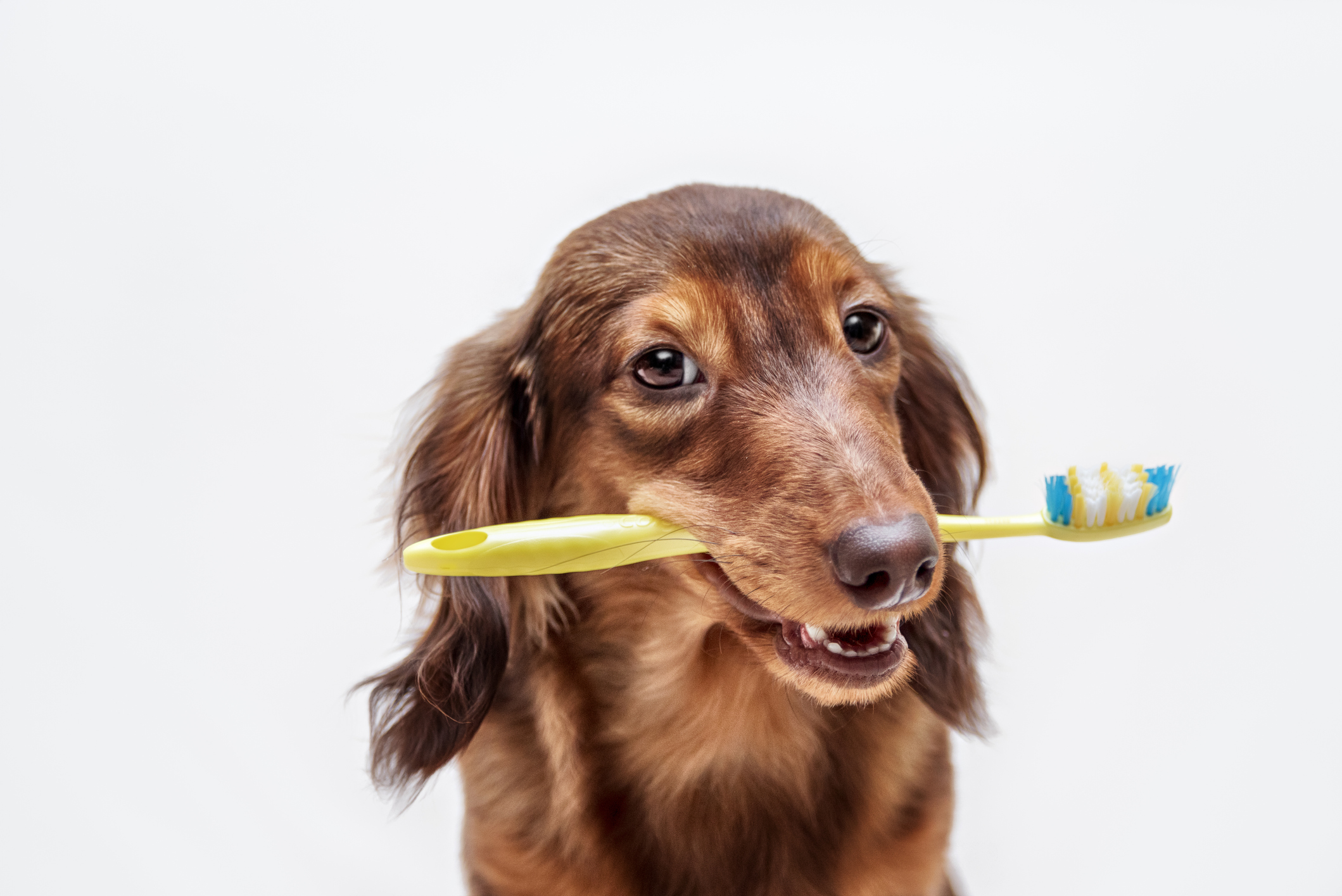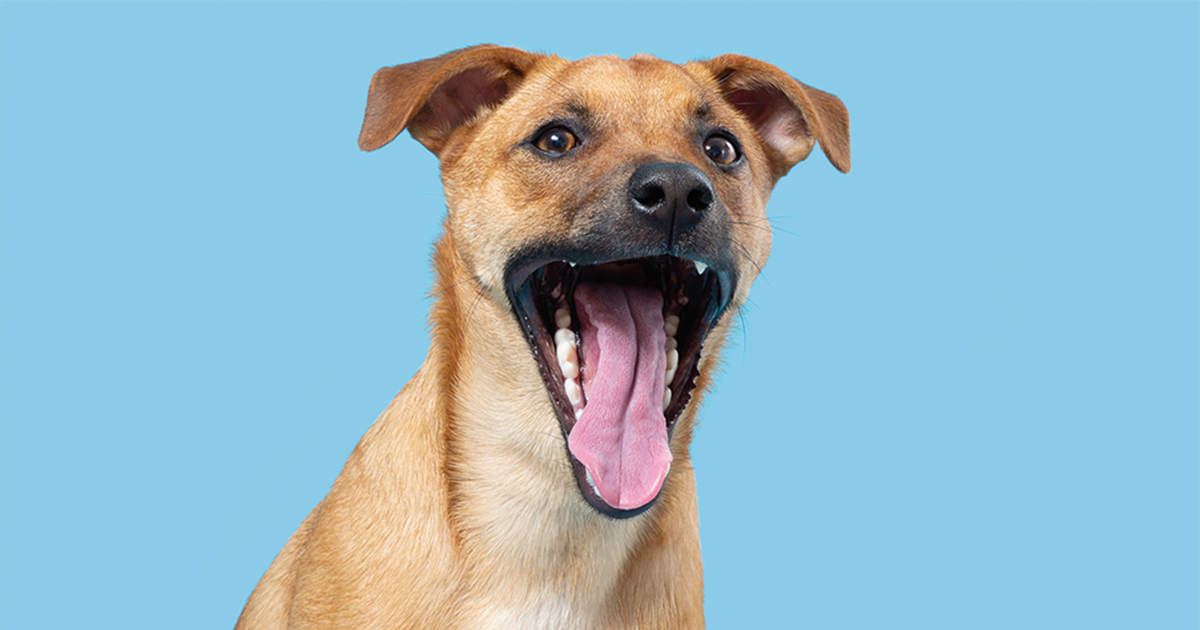For Pups With Short Attention Spans…
Veterinary Dental Specialists are dentists for dogs that perform cleanings, oral surgery, and other maintenance to support dogs’ dental health. When dogs are around 3–4 years old, it is recommended that they receive a Comprehensive Oral Health Assessment and Treatment (COHAT) during which doggy dentists clean the teeth, probe the gums, perform preventative x-rays, and more while the dog is safely sedated.
Canine teeth are called “canines” for a reason, and it should come as no surprise that dogs are equipped with a mouthful of them. So, this begs the question: Do dogs need dental work? Are dogs supposed to visit the dentist? Is there even such a thing as a doggy dentist?
The answer is yes! There are indeed doggy dentists. They’re called Veterinary Dental Specialists, and just like their human counterparts, they complete a formal training program in veterinary dentistry after veterinary school to become board-certified dental practitioners. These docs love puppy teeth, and have made careers out of performing annual teeth cleanings, oral surgeries, and preventative maintenance that keep teeth (and the rest of the body) healthy.
Just like you, dogs require dental care. Routine visits to the doggy dentist are key to maintaining good oral health and preventing periodontitis (a.k.a. the dreaded doggy dental disease.)
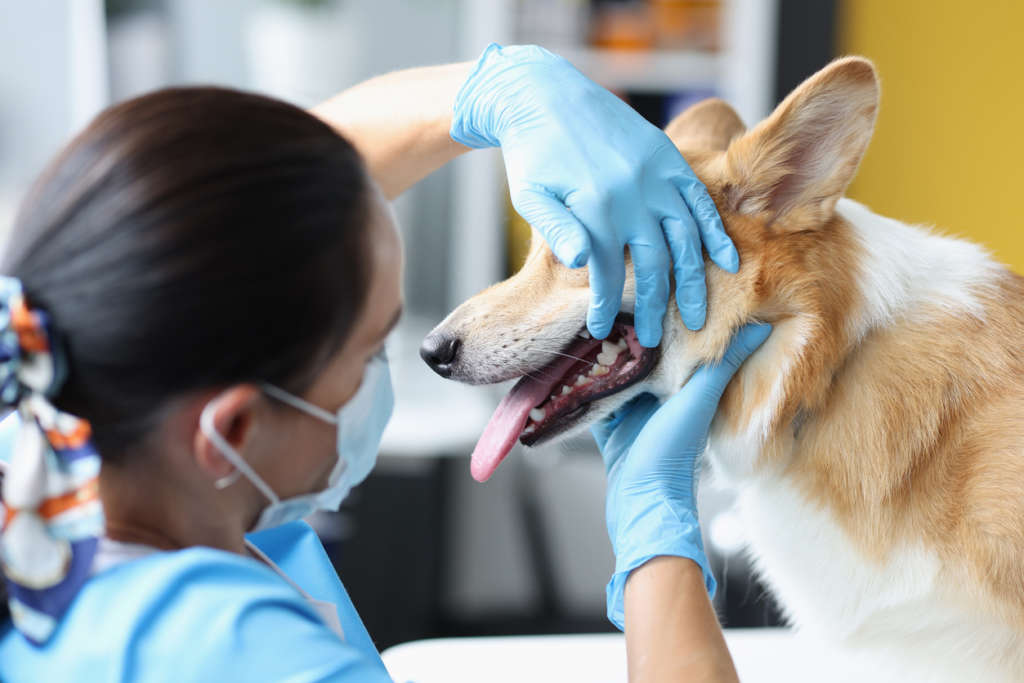

What Does A Dental Visit Look Like For Dogs, & Why Do They Need Their Teeth Cleaned?
A dental visit, called a Comprehensive Oral Health Assessment and Treatment (COHAT) in the dog world, involves everything that happens at a human dental visit. Their teeth are cleaned, gums are probed, mouth is x-rayed. The difference is that no dog on the planet is going to let a doctor do all of those things while sitting perfectly still, keeping their mouth wide open, and not getting scared.
As a result, for dogs, a COHAT happens under monitored anesthesia. This also allows for any necessary tooth treatments or tooth extractions if your vet discovers a problem during the exam and cleaning. Plus, no stress for the pupper! Without x-rays and a deep cleaning between the teeth, simply cleaning the crowns of the teeth (the part you can see), will completely miss most of the dental disease that occurs in a dog’s mouth. The majority of disease (and pain) happens below the gumline. This is why anesthesia is the only way for a dog’s mouth to receive a complete exam, cleaning, and treatment.
What Is Periodontal (Dental) Disease In Dogs?
Have you ever leaned in for a smooch and gotten a whiff of funky dog breath? That’s a potential indication of dental disease. Dental disease occurs when too much bacteria, plaque, and tartar get trapped underneath the gum line. After that point, it can lead to painful inflammation, bleeding, and a host of concerning symptoms. If left untreated, it will really put your pup through the wringer.
Recent studies show that almost 90% of dogs1 develop some form of periodontal disease by the time they reach age 2. Additionally, periodontal disease progresses much faster in dogs than it does in people (about 5x).
Common symptoms of periodontal (dental) disease include:
- Bad breath
- Yellow or brown discoloration
- Increased drooling
- Bleeding gums
- Loss of appetite
- Wobbly or loose teeth
Uncontrolled periodontal disease can cause pain, abscesses of the teeth, decreased chewing function (decreased ability to eat), jaw fracture, and disease in other organs of the body2.
In Depth Reading: The 4 Stages Of Periodontal Disease In Dogs: A (Not So Gross) Visual Guide
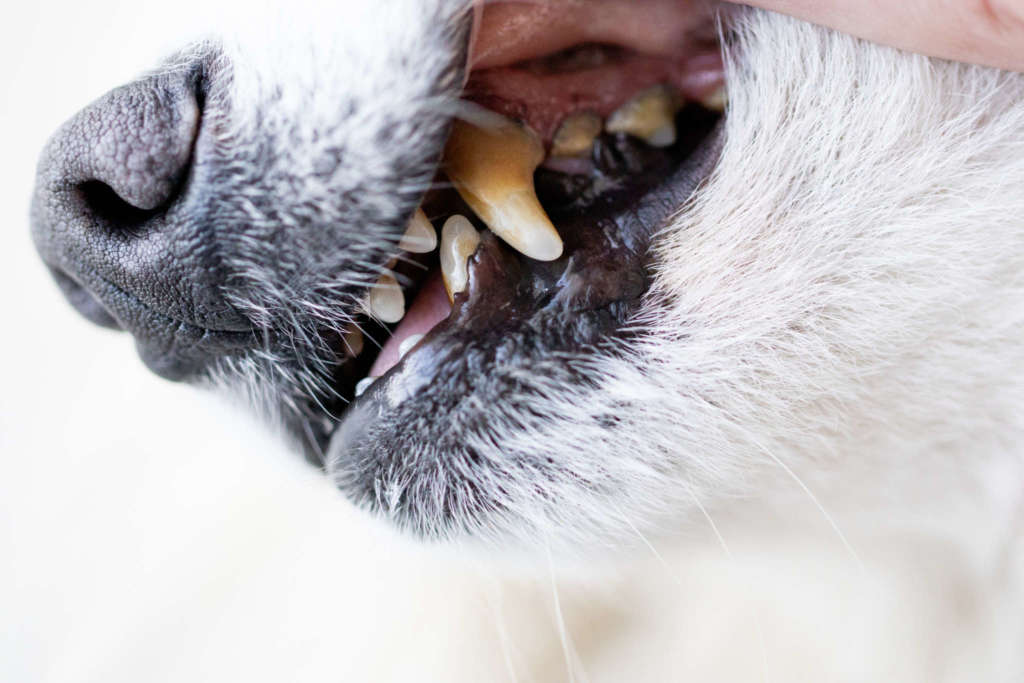

Dentist or no dentist, you can take preventative measures to keep dental disease at bay by providing dental care at home as well. Regular brushing, dental chews, and a daily teeth cleaning routine like BARK Bright will help keep your dog’s oral health in tip-top shape. It helps remove plaque from the teeth (plaque is the soft whitish stuff that accumulates on dog and human teeth at the end of the day). This doesn’t replace a regular COHAT with a veterinarian, but in conjunction with COHAT, home care will help to avoid or delay major interventions like tooth extractions.
Unfortunately, plaque plays by its own rules. As plaque accumulates, the bacteria hardens into a calcified tartar. Once this happens, you won’t be able to effectively remove the buildup with simple brushing and at-home remedies alone. (Please don’t try to—you can actually hurt your dog by brushing too hard, and it won’t work). An anesthetized COHAT is the way to get rid of that stuff.)
How Often Should Dogs Get Their Teeth Cleaned?
Regardless of age or breed, vets recommend getting your dog’s teeth cleaned yearly after reaching mature adulthood (usually starting at 3–4 years of age).
Annual cleanings provide a baseline and structure for your dog’s oral health, and who doesn’t want squeaky clean teeth and stink-free kisses?
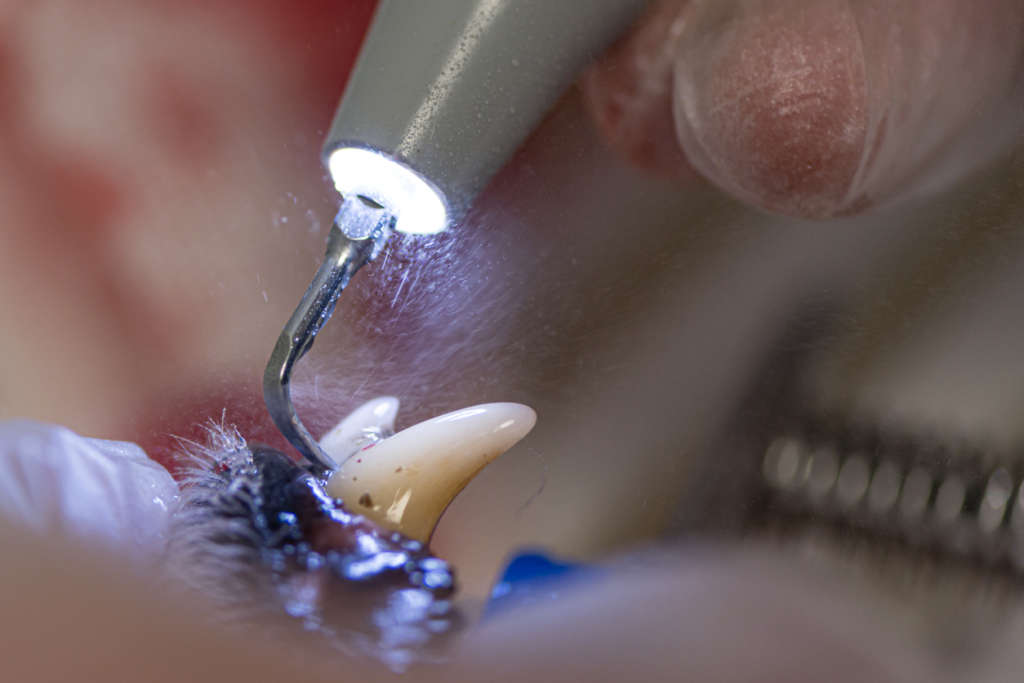

Does Age Matter When It Comes To Dental Disease?
In general, yes. Older dogs are more at risk for developing dental disease than younger pups, and they’ve had more time to do so. Additionally, older dogs often have other health conditions that can be exacerbated or complicated by dental disease.
As with most health issues, age plays a factor in the severity of symptoms experienced. That’s why it’s especially important to start preventative care young.
What About Breed Size?
Smaller dogs in particular require consistent dental maintenance3 for a variety of reasons. Firstly, they can have all 42 teeth, but much smaller mouths than their large breed counterparts. This causes overcrowding, and makes it easier for plaque to find hiding spots to hang out and mature into tartar.
Secondly, some small breeds have a tendency to hold onto their baby teeth for longer, even after the adult teeth have erupted. That means a longer period of time for plaque to accumulate. Certain smaller breeds like pugs and bulldogs are even more at risk due to their flat-face anatomy, so take special care.
Related Article: Chihuahua Dental Problems: Why Do Chihuahuas Have Such Bad Teeth?
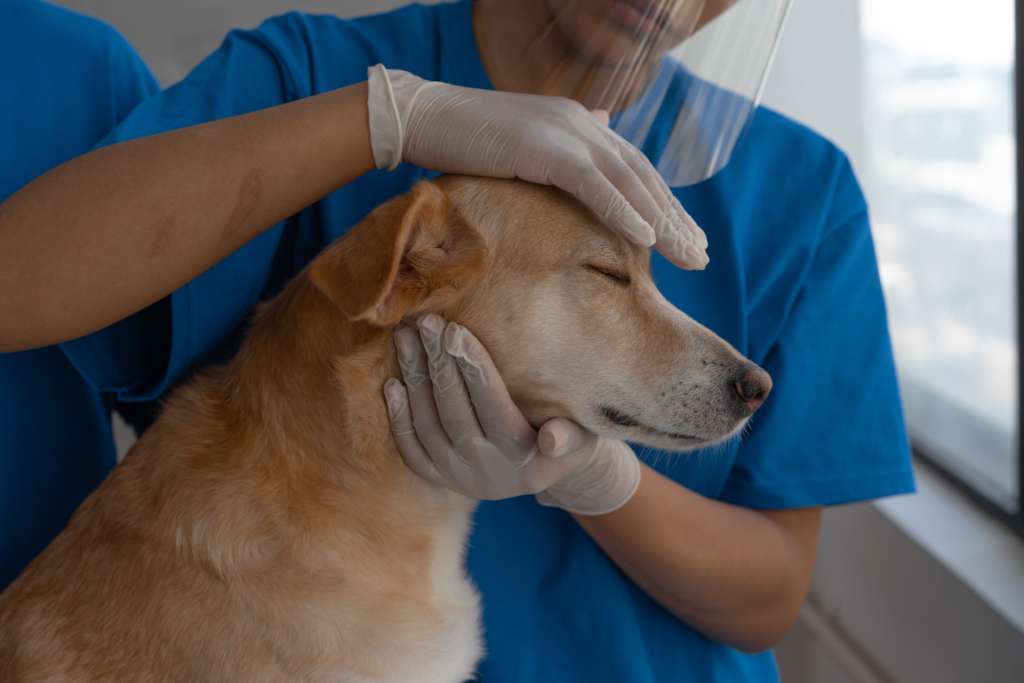

What Happens During A Professional Teeth Cleaning?
Veterinary dentists conduct teeth cleaning procedures using general anesthesia, which means your dog receives medication to help them sleep through it all. After all, most dogs wouldn’t tolerate a thorough dentist appointment wide awake!
The doggy dentist will perform a rigorous examination of your pup’s vital signs prior to and during the cleaning. If your dog is older or has any chronic conditions, they might recommend blood work to ensure they can administer anesthesia safely.
After your dog drifts off to sleep, the dentist will inspect their teeth and perform a full oral exam. This includes cleaning the teeth, scraping off plaque, flushing the gum line, and polishing. Veterinary technicians will continue to monitor your dog’s vital signs closely throughout the procedure to make sure they’re safe.


What Happens After The Teeth Cleaning?
Once your dog begins to wake up, they’re usually back to normal within a few hours. You might notice some light coughing, but that is expected from the intubation (insertion of the breathing tube).
Your pup may feel pretty sluggish for a day or two, and depending on whether they were prescribed any painkillers, a little constipated. They may be more vocal the first night or two at home—but that’s usually a result of the anesthetic drugs. These side effects are all normal and part of the process!
Remember, though, if you are unsure about whether any post-cleaning symptom is normal, talk it through with your vet! It’s always better to be safe than sorry. Keep on top of your dog’s annual visits to the dentist, and make this yearly teeth cleaning a smooth affair.
This article has been reviewed by Margo Hennet, DVM.
Margo Hennet, DVM, cVMA, and veterinarian at BARK is a canine nutrition, health, & wellness connoisseur. She has a combined 10 years of experience in clinical medicine, research, and education—that’s 70 dog years of know-how—and graduated from Colorado State University as a Doctor of Veterinary Medicine. She completed specialized training in internal medicine prior to working as a general practitioner in Colorado, has authored peer-reviewed publications and textbook chapters, holds certification in veterinary medical acupuncture, and is a member of the American Academy of Veterinary Nutrition and American Veterinary Medical Association.
Sources
1B. Niemiec, J. Gawor, A. Nemec et al. World Small Animal Veterinary Association Global Dental Guidelines. Journal of Small Animal Practice. July 2020 https://onlinelibrary.wiley.com/doi/10.1111/jsap.13132
2Pavlica, Z., Petelin, M., Juntes, P., Eržen, D., Crossley, D. A., & Skalerič, U. (2008). Periodontal disease burden and pathological changes in organs of dogs. Journal of Veterinary Dentistry, 25(2), 97–105. https://doi.org/10.1177/089875640802500210
3Kangas DVM, Katie B. “Are Small Dogs More Prone to Dental Problems?” Animal Wellness Magazine, 25 Jan. 2019, https://animalwellnessmagazine.com/small-dogs-dental-problems/



